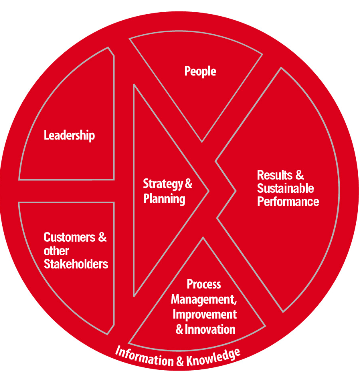
Subscribe to continue reading
Subscribe to get access to the rest of this post and other subscriber-only content.

Subscribe to get access to the rest of this post and other subscriber-only content.
400 words (5 minutes reading time) by Colin Weatherby

I have been experimenting with Microsoft’s ‘everyday AI companion’, called Copilot. I asked it to analyse the podcast ‘What on earth is a paradigm shift?’ by the Centre for Public Impact. I am not trying to second guess the great work by Lancing Farrell, simply to show how some new technology works!
This is what it came back with:
The podcast ‘What on earth is a paradigm shift?’ by the Centre for Public Impact (CPI), is a conversation between Adrian Brown and Professor Toby Lowe, who are both part of the CPI team. They discuss the concept of paradigms and how they apply to public service and systems change.
Here is a brief summary of the podcast:
Continue reading850 words (9 minutes reading time) by Lancing Farrell
The need for a new paradigm in local government in Victoria has been mentioned in a few posts recently (see 241 – Rate capping – the final words (from our future), 253 – Minds Change: My Journey to Transform Local Government Performance, and 261 – Reinventing Local Government). Model collapse, as described by Carole Parkinson and Tim Whistler, signals the end of an existing paradigm. This raises critical questions about the current paradigm in local government and the need for change. A recent podcast in the Reimagining Government series by the Centre for Public Impact, ‘What on earth is a paradigm shift?’, discusses paradigms and provides insights and practical tips for those wanting to bring about transformative change.
The podcast features host Adrian Brown and Professor Toby Lowe from the Centre for Public Impact, Henk-Jan Dekker from the International Centre for Environmental Research and Development, and Jessica Studdert from think tank ‘New Local’. Drawing on the work of Thomas Kuhn and Margaret Masterman, a paradigm was defined as a ‘grand explanatory narrative for how a part of the world works’. It operates on metaphysical, sociological, and exemplar levels, shaping perceptions of what exists and what should be valued. Understanding how paradigms work is crucial for those seeking systemic change in local government.
Continue reading800 Words (9 minutes reading time) by Colin Weatherby

I was reading the latest Local Government Information Unit (LGIU) newsletter from the UK and the news item in the image above caught my attention. Although the cause of the problem is central government cutting funding to councils, not imposition of a rate cap, it has the same effect on council finances and reinforces the view I expressed in my posts about the effects of the rate cap (‘Il comune povero- ‘The poor municipality’ and ‘Rate Capping – the final words (from our future))’. Councils in Victorian can respond by trying to improve current services and increase revenue, find efficiencies and reduce waste in operations, and they will still be unable to meet community needs and expectations within their available resources.
In Victoria, councils cannot issue a section 114, which in the UK means that all spending, apart from on protecting vulnerable people and providing statutory services, will be suspended. Instead, the Victorian government sends in Monitors to oversee council decisions, and then, if the council doesn’t respond as the State requires, they can dismiss the council and appoint Administrators to run the council. In the past, this has resulted in decisions being made by the unelected Administrators to sell community assets, cut services and make whatever changes they think are necessary to get the council back in the black. This tends not to meet community needs and expectations either.
Continue reading600 words (7 minutes reading time) by Lancing Farrell
Have you ever had that eureka moment where something you were trying to understand is suddenly made crystal clear to you? That’s exactly what happened to me after reading David McRaney’s thought-provoking book, ‘How Minds Change – The New Science of Belief, Opinion, and Persuasion.’ This enlightening read gave me reason to revisit some past posts on improving local government performance. In reading the book (and this is deliberate by the author) I was led through Piaget’s stages of assimilation and accommodation, before eventually reaching a Kuhnian paradigm shift. My epiphany was realising why organisational change is so hard.
When I looked back at my earlier posts, I realised that my growth as a leader commenced when I first saw work as a system. At the same time, I genuinely believed that I needed to become the architect of better approaches. I had an academic background, experience of travelling overseas to broaden my outlook, and a relentless passion for my work. I thought that if anyone could revolutionise services, it would be me.
However, this view eventually transformed into a more holistic and community-oriented perspective as I started to see the work as a ‘frog’ system, not a ‘bike’ system. You’ll need to read my previous posts to grasp the analogy, but in essence, I transitioned from a thinking I needed to be a one-man show and lead others by giving them better ways, to a more participatory approach where everyone is engaged in finding improvements.
Continue reading870 words (10 minutes reading time) by Colin Weatherby
I was talking to a former colleague recently and she described the decision making by her new CEO as ‘OECD’. I asked her what she meant. She said that when faced with any decision, the CEO would look for solutions that are:
O = obvious (i.e. he won’t have to explain the decision because it will be obvious to everyone).
E = easy (i.e. easy to act on the decision and within his capability to implement it).
C = cheap (i.e. it won’t cost any more money to act on the decision or it will immediately cost less).
D = done (i.e. when action has been taken, the result will be obvious to everyone).
I asked her how this was working out for her.
Continue reading880 words (7 minutes reading time) by Lancing Farrell

Source: Qlik
Summary
Australian local governments make decisions on a range of issues that impact their communities, such as planning, zoning, environmental management, infrastructure, waste management, community services, traffic management, and economic development. The decisions they make are influenced by legislative requirements, public input, and deliberation among elected officials. The specific responsibilities and decision-making processes of local governments can vary depending on the state or territory in which they are located. The decision-making process typically includes planning and preparation, public consultation, council meetings, decision-making, implementation, and review and evaluation.
In Colin Weatherby’s post on BI, he looked at how it is used by companies and how it might be used by councils. With some assistance from ChatGPT (I am becoming quite a fan), I have tried to drill down to the actual decisions councils make where BI would be useful.
Continue reading1300 words (12 minutes reading time) by Colin Weatherby
Source: ChatGPT
I am trying a new approach with this post and using ChatGPT to provide a summary with short and long versions to match your reading appetite. It might be a little repetitive if you read them all but it will reinforce the key points! Your feedback will be appreciated.
Business intelligence (BI) is a set of techniques and tools used to analyse data and make informed decisions. It is widely accepted in the private sector but is still evolving in local government where data collection is mainly driven by performance reporting requirements. However, with the financial challenges faced by councils, many are starting to adopt a ‘BI approach’ to understanding their financial position and improving decision-making. Councils can benefit from a BI approach that is tailored to their specific challenges and priorities to support performance monitoring, decision-making, and service delivery to the community.
Recently, I was talking with a colleague about the financial information they were using to understand the impact of rate capping on the financial sustainability and resilience of their council. This led us to discuss what kind of business intelligence councils need.
Business intelligence, or BI, is defined in the image above. In the private sector, BI is widely accepted and standardised, and there are consultants who provide these services to companies. Companies know what decisions they need to make and that the data to support those decisions is available, they just need it to be discovered, collated, and analysed. However, in the council sector, access to data and data collection is typically driven by performance reporting requirements, rather than a the need for improved data in decision-making.
Businesses use BI for various purposes, including decision-making, performance monitoring, trend analysis, data-driven planning, competitive advantage, and fraud detection. Councils, on the other hand, may have different priorities and challenges. While competitiveness may not be a high priority, customer satisfaction and loyalty can still have a significant impact on the council. The recent financial crunch due to rate capping and high inflation has prompted some councils to start using BI to understand their financial position over time.
Therefore, it’s beneficial for councils to adopt a BI approach that incorporates their specific challenges and priorities to support decision-making and performance monitoring. This can include data analysis, performance monitoring, requirements gathering, process improvement, and budgeting and financial analysis. The goal of BI in local government is to improve decision-making, increase efficiency and effectiveness, and enhance the delivery of services to the community.
Keep going if you are interested in a more detailed discussion.
Continue reading1000 words (9 minutes reading time) by Lancing Farrell

This is the last post on my experience of management thinking in local government. Writing about it makes it seem like a long haul. With hindsight, there have been lots of interesting ideas, many with potential value to improve services, but few with any practical method to make them useful. And less with a way to implement them across a diverse organisation like a council.
Sometime around 2017 I went back to seriously read more of John Seddon’s writing about the Vanguard Method. At this time, Vanguard had a launch for their Australian office in Melbourne, and I went along. Several Australian organisations, public and private, talked about their experience using the Vanguard Method. I wanted to know more. In 2018 I had the opportunity to fly to London and attend a masterclass on digital transformation being held by Vanguard. I met John Seddon and other senior staff from Vanguard. I also spoke with people from local government in the UK who had experience with the Vanguard Method.
This was fortuitous in the development of my thinking. After three decades I had arrived at an understanding of local government and the way it works that made me think systems thinking was the best way to improve the performance of services. The Vanguard Method provides a way to implement systems thinking that has been tested and proven in local government. It provides the method lacking in Public Value. It works with the culture prevalent at many councils. Continue reading
1200 words (10 minutes reading time) by Lancing Farrell

This second post continues my management journey back into local government. This time into the wasted years – time spent trying different management ideas without success.
Some 10 years later I re-entered local government in a management role. Now we had new management ideas, some even described to me as ‘fads’. In the time I had been out of the sector, the idea of management had gained more currency. I came across Evidenced-Based Decision Making, although as some colleagues pointed out, in practice it was more commonly ‘decision-based evidence making’.
Evidence-based management is an emerging movement to explicitly use the current, best evidence in management and decision-making. It is part of the larger movement towards evidence-based practices.
I found a very interesting sounding book at this time called The Knowing Doing Gap by Jeffrey Pfeffer and Robert Sutton. The title seemed to say it all – how can organisations put their knowledge into action and be more successful? I would like to say this book changed my life, but unfortunately it didn’t. Before I could read it thoroughly, I lent it to a colleague who never returned it. That closed a knowing doing gap for me – don’t lend other people your new books!
I found that Employee Surveys had now become common place. Councils were now being managed by CEOs who ‘took the temperature’ of organisational culture and then developed plans to improve it. I was never too clear on the connection between culture scores and value for customers or the community.
Employee surveys are tools used by organizational leadership to gain feedback on and measure employee engagement, employee morale, and performance.
These surveys tended to show very little change from one survey to the next, even over a decade. It suggested to me that it wasn’t helping (or relevant) but we still did it. Once I looked at a book produced by one of the big culture survey firms and I noticed that our organisational culture resembled the culture of every industry they surveyed in Australia (except industries with lots of international firms). The differences between industries were at the margins. It seems Australian culture dominates in all Australian workplaces.
After a while, I started working at a council that was implementing the Australian Business Excellence Framework (ABEF). As someone who by now was quite interested in what local government thought was good, or even better, excellent management, this seemed like a useful idea. There were lots of other councils using it (some were Gold medallists) and it was an idea developed in the private sector, which had appeal to me after returning from working in my own business. So, I joined the strategy and planning group. The CEO had decided ABEF implementation would start with that category.

The EBEF framework and categories.
I found this interesting because I would have started with Leadership, simply because of its potential to effect change and improvement. Since then I have learned that you can start with any of the seven categories. My question today would be why not start with the customer? In this time I was able to travel and meet with officers at award winning Australian councils and spent hours studying organisational strategy.
Examining how councuil strategy and planning works only highlighted for me the dysfunction in council strategy development, with various types of plans in a hierarchy (you guessed it, a triangle) with different plans or strategies created at different times and in different ways. None of it was connected in the way the triangle suggested, and, in a surprise to everyone, the group worked out that one of the key plans linking political and organisational actions, didn’t actually exist except in the triangle picture used by the CEO to explain how it worked.
The Australian Business Excellence Framework (ABEF) is an integrated leadership and management system that describes the elements essential to organisations sustaining high levels of performance. It can be used to assess and improve any aspect of an organisation, including leadership, strategy and planning, people, information and knowledge, safety, service delivery, product quality and bottom-line results.
I then discovered Lean and found that it was the new version of TQM or BPR. It seemed to embody similar thinking ideas. I never bought a book on Lean but I started working at a council with a Lean practitioner. He (and many others) spent a lot of time analysing services that weren’t working. Hours were spent collecting data and mapping processes. Days trying to understand what the data was saying and where change might make it better. In the end, while chnages were made, the problems remained unsolved.
My involvement with cross-organisational business processes led me to Karen Martin’s book The Outstanding Organisation, and then her next book Value Stream Mapping. It seemed simple, we just had to learn to understand services as a value stream and then articulate and deliver the value proposition!
A value stream depicts the stakeholders initiating and involved in the value stream, the stages that create specific value items, and the value proposition derived from the value stream. The value stream is depicted as an end-to-end collection of value-adding activities that create an overall result for a customer, stakeholder, or end-user.
Around this time there seemed to be a ‘wave’ of people-based change programs. Leading Teams and The Colloquium are examples. CEOs were clearly searching for ways to act on culture and improve survey results. No doubt these programs were useful, but building people skills wasn’t making the difference CEOs expected. I participated in one of these programs and learned a lot. It was extremely useful to me as a person responsible for managing other people. However, it didn’t help me or my organisation to produce better services.
As an aside to my management journey, in 1995 I had discovered Public Value (yes, I bought Mark Moore’s book Creating Public Value) and the idea appealed to me enormously. Of course, council services are intended to produce the value agreed by people in the community, after all, they are the ones who are paying. In 2013 I bought Mark Moore’s second book (Recognising Public Value) where he illustrates the creation of public value using case studies and describes a way of measuring it (the Public Value Scorecard (PVS)). There is no arguing with the logic of Moore’s strategic triangle, but I couldn’t work out how to use it. Even the PVS was a lagging measure – you would only know if you had succeeded or failed, when you had either succeeded or failed.
I will mention one last management fad that swept local government here recently – User-Centred Design (UCD – there always seems to be an acronym). The council I was working at made a commitment to ‘customer first’ and commenced the analysis and re-design of services using the UCD methodology. We developed personas, customer apps, online forms. It really should have been called ‘digital first’. The problem that emerged was lack of integration between these new and easier ways for customers to deal with us and the actual service delivery systems. It had become easier for customers to make their needs known to us, and to place a demand on one of our service systems, but we were just as slow to respond, and just as likely to fail to satisfy their need.
The upshot of all my thinking and doing was a level of dissatisfaction with the way things are and a determination to find a way to deliver better services. I felt a compulsion to do this as rate capping was reducing our revenues and making it harder to make ends meet. A better way was needed.
Another pattern had emerged – I was now interested both in services as a cross-organisational process, and how you help an organisation to change and improve services.
It was at this time that I recalled some earlier reading I had done on systems thinking and the application of systems thinking in organisations. It started with Alistair Mant and his excellent book, Intelligent Leadership, that I had purchased in the late 90s. I also bought and read David Wastell’s book Managers as Designers in the Public Sector, and through that book came across John Seddon’s book, also from the Triarchy Press stable, on Systems Thinking in the Public Sector. The idea that systems thinking could provide a solution to service improvement became clear in my mind.
I also became convinced that Command and Control thinking (a term used by John Seddon) was a barrier to service improvement. Councils are highly siloed organisations. We like functional specialisation. Each discipline focuses on their work and excelling at what they do. Hierarchy is critical for decision making and it is often the only way that the silos become linked. Senior management have the ‘umbrella’ jobs that integrate work across silos, or at least that is where it can and must happen in a Command and Control hierarchy.
I started looking for more information about systems thinking. At some stage I came across David Stroh’s book Systems Thinking for Social Change. By then I was hooked. There had to be a way of applying systems thinking to improve local government performance in delivering services that provides public value. The challenge was to find a method to do it. The ideas were interesting and well-articulated, but how do you use them to do the work differently?
By now I had begun blogging to communicate with others experiencing the same frustrations as me. It helped me to learn.